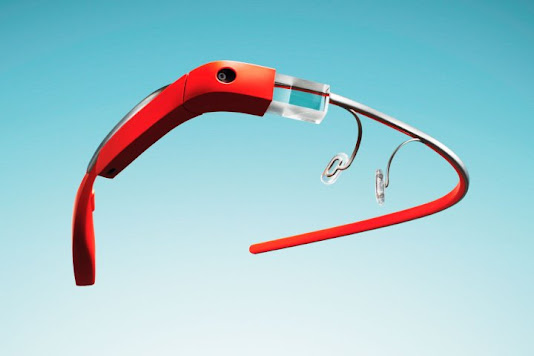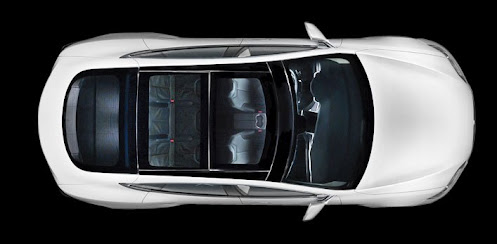A Drifting Fish Farm $750,000 (estimated)
Kampachi Farms, a mariculture company in Hawaii, is devising a way to meet our insatiable desire for sushi with a farming method that has near zero environmental impact. By filling 100-ft. (30 m) copper-alloy mesh cages with fingerlings and letting them drift, tracked by GPS, in deepwater ocean, the company hopes to harvest thousands of tons of sustainable sashimi-grade kampachi. In 2011 it tested 20-ft. (6 m) pens 3 to 75 miles (5 to 120 km) off Hawaii. After six months, they yielded 10,000 lb. (4,500 kg) of kampachi, which grew twice as fast as expected.
Bahar Towers $245 million
In Abu Dhabi, where temperatures peak at well over 100°F (38°C), keeping buildings cool is a challenge. Al Bahar Towers feature a facade with intricately designed shades that open and close in response to the sun, reducing heat gain by more than 50%. Using less air-conditioning helps reduce the towers’ carbon emissions by an estimated 1,750 tons per year.
Baxter $22,000
Conventional industrial robots are scary behemoths, but Baxter is a new breed. The latest brainchild of celebrity roboticist Rodney Brooks, who helped invent the Roomba, Baxter is built for light repetitive tasks like packing and sorting. And it’s cheap enough and user-friendly enough—look at that face—for small outfits that otherwise couldn’t afford a robot worker.
Body Armor for Women $555
Women are not small men. Finally realising this, the U.S. military is testing body armour designed expressly for a woman’s body. Current designs are too loose and too long, leaving gaps that might make some women more vulnerable to bullets and shrapnel. Even a men’s extra-small is too big for 85% of female troops. The 101st Airborne Division’s 1st Brigade will test the new armor during an upcoming deployment to Afghanistan.
The original version of the article has been updated to reflect the fact that the current designs of the armor provide protection for men and women against gunfire fragments; the new version provides a better fit.
Bounce Imaging $500 (estimated)
An MIT student and an Army Ranger have come up with a way to provide first responders with the kind of technology elite SEAL teams have. To give firefighters and cops a full picture of a burning building or a hostage situation, the baseball-size orb is tossed into the area. Its six cameras snap pictures while its sensors detect air quality, temperature, radiation and other hazards. It then beams the data to mobile devices.
The Civilization Starter Kit Free
Marcin Jakubowski built a tractor in six days. Then he told the world how to do it: he made the designs, the budget and an instructional video available free online. A farmer and technologist and the founder of Open Source Ecology, Jakubowski has identified the 50 most important machines required for modern life—from the soil pulverizer to the oven—and is working to make a prototype of a low-cost DIY version of each so that anyone anywhere can build them. “If we can lower the barriers to farming, building and manufacturing,” he says, “then we can unleash massive amounts of human potential.”
The Curiosity Rover $2.5 billion
NASA had visited Mars but never like this. Curiosity, which landed in Gale Crater in August, is a 1-ton, SUV-size Mars car with more scientific instrumentation—10 times as much, by weight—than ever sent to the Red Planet before. But it was how it got there that really made the machine sublimely cool: the rover was lowered to the ground on cables by a hovering capsule, touching down balletically in preparation for two years of exploration.
The Deepsea Challenger Submarine $8 million
Better known as the submarine designed by filmmaker James Cameron, the 12ton, 24-ft.-long (7.3 m) Deepsea Challenger reached the oceans’ deepest point—about 7 miles (11 km) below the surface—in the western Pacific in March. Built to withstand 1,000 atmospheres of pressure (or three SUVs sitting on your toe), the sub is equipped with digital 3-D cameras and structured with a vertical axis meant to accelerate its descent.
Eliodomestico Solar Water Distiller $50
Freelance designer Gabriele Diamanti created this solar-powered distiller for use in coastal areas in the third world that are deprived of freshwater. It is half as expensive and 67% more efficient than existing models, and his hope is that local manufacturers will adopt the open-source design and mass-produce it for local populations.
OraQuick Home HIV Test $40

With just a swab of saliva and 20 minutes, OraQuick can identify the
antibodies that signal HIV infection. It’s the first DIY test for
HIV—the same one that health professionals use but without the trip to a
doctor’s office or the need to wait days for results. The kit includes a
24-hour help line and resources for dealing with a positive result.
Four Ukrainian students have created gloves that allow speech- and hearing-impaired people to communicate with those who don’t use or understand sign language. The gloves are equipped with sensors that recognise sign language and translate it into text on a smart phone, which then converts the text to spoken words.
Google Glass $1,500
Glass is, simply put, a computer built into the frame of a pair of glasses, and it’s the device that will make augmented reality part of our daily lives. With the half-inch (1.3 cm) display, which comes into focus when you look up and to the right, users will be able to take and share photos, video-chat, check appointments and access maps and the Web. Consumers should be able to buy Google Glass by 2014.
Indoor Clouds Not for sale, maybe?
That’s not Photoshop. The Dutch artist Berndnaut Smilde has developed a way to create a small, perfect white cloud in the middle of a room. It requires meticulous planning: the temperature, humidity and lighting all have to be just so. Once everything is ready, Smilde summons the cloud out of the air using a fog machine. It lasts only moments, but the effect is dramatic and strangely moving. It evokes both the surrealism of Magritte and the classical beauty of the old masters while reminding us of the ephemerality of art and nature.
Five MIT students and their professor Kripa Varanasi have come up with a way to make a surface that anything will slide off—from ketchup out of bottles to ice off airplane wings. The plant-based product, LiquiGlide, adds a microscopic slippery coating to almost any material—glass, ceramic, metal or plastic.
The MakerBot Replicator 2 $2,199
Download or create a design, hit Print, and watch as this sleek, desktop-size 3-D printer extrudes ultra-thin plastic layers, each melting into the one below to create an object—or, if you want, hundreds of copies of it. The latest model from Brooklyn-based MakerBot prints bigger, faster and more precisely than its predecessor. And with more-intuitive software and no assembly required, the upgraded Replicator means that anyone’s home can become a mini factory.
The biggest thing NASA’s first space suits had to do—aside from keep astronauts alive—was to look spacey. So ordinary test-pilot suits were simply redesigned in a nifty silver. Things are harder now as the U.S. prepares for new deep-space missions. The Z-1 space suit provides go-anywhere garb featuring more-flexible joints, radiation protection for long stays in space and a hatch on the back that allows the suit to dock with a portal on a spacecraft or rover so an astronaut can crawl through without letting dust in or air out.
Nike Flyknit Racer $150
By knitting thread into a single layer to fit around your foot—instead of cutting and sewing together multiple materials—engineers at Nike not only made this sneaker lighter (just 5.6 oz., or 160 g) but also gave it a precision fit: the weave alternately grips and gives despite the absence of liners or reinforcements. Plus, it’s eco-friendly, with less waste left on the factory floor.
The Motion-Activated Screwdriver $40
The sensors found in smart phones and Nintendo Wii controllers have migrated into Black & Decker’s cordless 4v MAX Gyro, billed as the world’s first motion-activated screwdriver. Tilt it right by a mere quarter of an inch and it screws clockwise to tighten; left, and it turns counter-clockwise—all thanks to an internal gyroscope that senses wrist motions, which are measured by a small microprocessor that turns those movements into changes in the drill’s speed and direction.
Self-inflating tires $200 each (estimated)
As soon as the pressure in these Goodyear tires (which don’t have an official retail price yet) gets too low, they know it. An internal pressure regulator opens to allow air to flow into a pumping tube, and as the wheel turns, the flattened part helps squeeze air from the tube through an inlet valve into the tire. Once the air pressure hits an optimal level, the regulator closes—all without the driver’s realizing anything was wrong.
Digital cameras have been getting smaller and more capable every year, but that trend took a huge leap forward in 2012 with the Sony RX100, which bridges the gap between point-and-shoots and pro-quality digital SLRs. Sony’s innovative design and 1-in. (2.5 cm) sensor allow the camera to take flawless photos even though it’s 20% slimmer than your average digital SLR—small enough to fit in your pocket.
The Switchblade Drone $40,000–$150,000 (estimated)
At 2 ft. in length and weighing 6 lb. (60 cm, 2.7 kg), the Switchblade drone can be carried into battle in a backpack. It’s a kamikaze: the person controlling it uses a real-time video feed from the drone to crash it into a precise target—say, a sniper. Its tiny warhead detonates on impact. In effect, it makes fighters in the field their own air support.
Techpet $59.99
Remember Tamagotchi? A new toy from Bandai, the company that gave us that classic virtual pet, goes even further. Download the TechPet app, dock an iPhone in the robotic doggy frame, and turn your phone into the cartoon face of a canine that’s eager to be fed via touchscreen. This puppy even recognizes gestures and verbal commands via the phone’s camera and microphone.
The Tesla Model S $49,900
This electric four-door sedan has the lines of a Jaguar, the ability to zip for 265 miles (426 km) on one charge—that’s the equivalent of 89 m.p.g. (2.6 L/100 km)—and touchscreen controls for everything from GPS navigation to adjusting the suspension. Tesla is building a network of supercharger stations—six are open so far—so owners aren’t tethered to their home port.
After nine years of work, a team led by Kosuke Morita at the RIKEN Nishina Center for Accelerator-Based Science in Japan has created three atoms of the highly unstable superheavy ELEMENT 113. As yet nameless, it has an enormous nucleus containing 113 protons and 165 neutrons.
Wingsuit Racing $600–$2,000 per wingsuit
Flying humans wearing batlike suits competed in October in the first ever Wingsuit Flying World Championship in China. Participants descended from 5,000-ft. (1,500 m) cliffs, glided through a valley course and eventually parachuted down, covering about 3⁄4 of a mile (more than a kilometre) in about 30 seconds. The winner: South African Julian Boulle—one of just 20 people currently qualified to compete—who finished in 23.41 sec., a world record.
























No comments:
Post a Comment